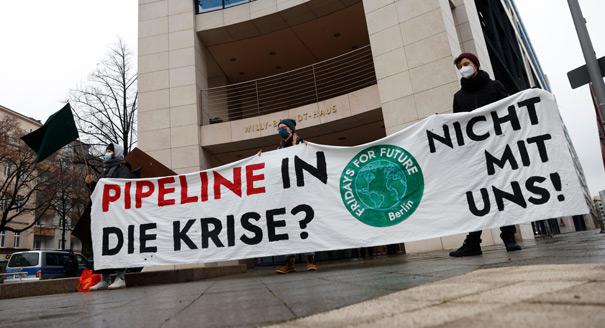While Russian officials talk endlessly about their plans to sell as much natural gas to China as they currently do to Europe, in fact, Gazprom will have no future without the European export market.
For Russia and Gazprom, the European export market has a number of advantages over the Asian one, including that the capacity of European pipelines exceeds Gazprom’s actual deliveries by more than double.
Europe also has a diversified market, so Gazprom is not at the mercy of one or two consumers. What’s more, Gazprom’s production potential already exceeds its total sales by 200 million cubic meters per year. Finally, Gazprom has signed numerous contracts with European buyers that extend to 2035 and beyond.
China offers nothing of the kind. There are not enough pipelines leading to China to increase deliveries to European levels. Furthermore, the country lacks production-ready gas fields and infrastructure, and no one is sure whether China actually needs all the gas that Gazprom wants to sell it: Beijing has consistently refused to finance Russian gas projects. Most importantly, gas prices on Asian markets won’t be high enough to justify Russia’s extraction and transportation costs for at least the next five to ten years.
Gazprom is facing a number of challenges in Europe as well, however. First, EU gas consumption has increased less significantly than Gazprom management projected. Indeed, though Europe’s own gas output has been steadily decreasing, imports are falling even faster due to a 20 percent drop in demand. In fact, net imports fell from 299 billion cubic meters in 2010 to 219 billion cubic meters in 2014. A slight uptick in 2015 has so far failed to reverse the trend.
Despite these realities, Gazprom officials are using figures from the last quarter of 2014 to report fictitious increases in demand for Russian natural gas.
Statoil experts predict that demand for natural gas in the EU will continue to decrease 0.4 to 1.6 percent annually until 2040. Though the market for new gas shipments to the EU may total 40 billion to 70 billion cubic meters by 2035, it’s unclear how much of this will come from liquefied natural gas (LNG) imports and how much will be left for Gazprom.
Moscow is beginning to understand that LNG prices will be competitive with Russian gas for at least the next ten years. In the past, Gazprom spin masters liked to talk about the benefits of their monopoly over the competition. Now, however, at international conferences they use visual aids to prove that Russian pipeline gas is cheaper than American LNG.
Let’s do some math. In August, the average price of the natural gas that Gazprom sells to Europe on long-term contracts pegged to oil prices was $150 per 1,000 cubic meters. Spot market deals were even cheaper.
No matter how you look at it, Gazprom is losing money on gas shipments to Europe—and U.S. shale gas has barely hit the market. Its only hope is that the LNG from the United States and other countries will be sold below cost; in this case, it will simply wait for its competitors to lose the price war and go broke.
And a price war is right around the corner. LNG global supplies are set to increase by 50 percent over 2014 levels by 2020. The projects launched and mostly financed when gas prices were high are being completed now, which will lead to overproduction and predatory pricing.
We are now seeing a rapid increase of U.S. gas at prices that don’t allow companies to recoup the costs of extraction, liquefaction, transportation, and regasification. Gas that costs the seller $6 or even $7 per 1,000 BTU is being sold to South America for $5.50—and even cheaper to Portugal and the UK. The goal is to offset at least part of the liquefaction expenses and secure a market share that can be fully tapped if prices rise in the future.
It’s hard to say who will win the price war. On the one hand, Gazprom is up against enormous LNG surpluses around the world, EU supplier diversification regulations, and a reputation for being the Kremlin’s political instrument.
On the other hand, Gazprom does control enough field deposits to supply the equivalent of another Europe should there be more demand for its product. It also has the infrastructure necessary to deliver natural gas to Europe—and currently uses less than half of its capacity. What’s more, Russia’s political leadership will never abandon Gazprom, which is sometimes referred to as a “national treasure”: it may offer Gazprom tax breaks and other benefits to sustain its struggle against the competition.
